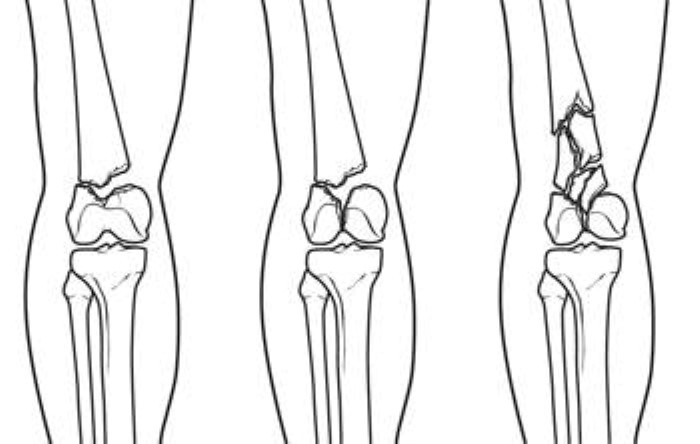Distal femoral fractures can be defined as the ones that occur just above the knee. These types of fractures extend from the distal metaphyseal-diaphyseal junction to the femoral condyles’ articular surface. When it comes to their occurrence, then distal femoral fractures account for around 3 to 6 percent of all femur fractures. These fractures can occur in both elderly and younger ones. In young, the cause of distal femur fractures is most commonly high-energy trauma, while on the other hand, occurrence in old-aged people could be low-energy injuries due to weakening of bones or certain diseases that result in bone weakening.
For surgical treatment of distal femur fractures, Supracondylar Nailing System could be used.

Causes of Distal Femur Fractures
High energy trauma is one of the most common causes of these fractures especially in the case of young adults. This could result due to falling from a great height, extreme collision, automobile accidents, and sometimes due to sports injuries.
In the case of elderly people, the situation is a bit more serious due to their low bone quality. Bone deteriorates with age making the person prone to getting fractures even with low-energy trauma. Similar is the case with distal femur fractures, they could occur even after a slight fall in elderly people. Besides this, bone-related diseases like osteoporosis may also be the cause of distal femur fractures in old-aged people.
Distal femur fractures can be classified as extraarticular, partial articular, and complete articular fractures.
Symptoms of Distal Femur Fractures
The patient with distal femur fractures may experience:
- Swelling and bruising
- Pain while bearing weight
- Deformity
- Tenderness during touch
Diagnosis of Distal Femur Fractures
Physical Examination
At first, the doctor will examine the medical history of the patient along with a physical examination. This will help the doctor know the reason behind the symptoms the patient is facing. Paying close attention to medical history and physical examination is important in identifying whether the patient may have sustained other injuries or not. Thus, the doctor can define the best possible treatment procedure to provide relief as early as possible. But for that, certain other tests may also be performed to get a detailed look at the fracture.
Tests
Imaging tests like X-ray, CT scan and MRI may also be performed by the doctor to identify the place where injury has occurred in the bone. For example, an X-ray examination delivers clear images of the bone and the doctor can see the area where the fracture has occurred. While on the other hand, the doctor can see the cross-sectional image of the patient’s limb with the help of a CT scan blacktown and he/she can identify the severity of the condition.
Treatment
Depending upon the severity of the case, the orthopedist surgeon will decide whether the non-surgical treatment will fix the fracture or surgery will be required. Let us see both aspects of the treatment one by one:
Non-surgical treatment
Skeletal traction and casting & bracing are the most commonly used non-operative procedures that may be used for the treatment of distal femur fracture. In the case of skeletal traction, a pulley-based system having weights and counterweights is used to hold the broken bone fragments together.
Surgical treatment
Surgical treatment is often carried out with the use of orthopedic implants to align and hold the broken bones together while allowing them to heal.
Siora Surgicals Pvt. Ltd. is a reliable manufacturer and supplier of Orthopedic Implants and Surgical Instruments having numerous clients across the globe.
The type of surgery performed will depend upon the severity of the fracture and the condition of the patient. The surgeon may choose to use an External Fixator System if the surrounding tissues near the injured area are badly injured. Whereas, if internal fixation is the best surgical procedure for the patient, then the surgeon may use Intramedullary Interlocking Nail, Bone Screws and Plates, or even Supracondylar Bolts & Nail.
I’m a 20-something stay-at-home mother and wife. I have an amazing husband, a beautiful daughter, two loving dogs, and a lazy cat. I wouldn’t change my life for anything! I love to read, listen to music, cook and blog!

Speak Your Mind